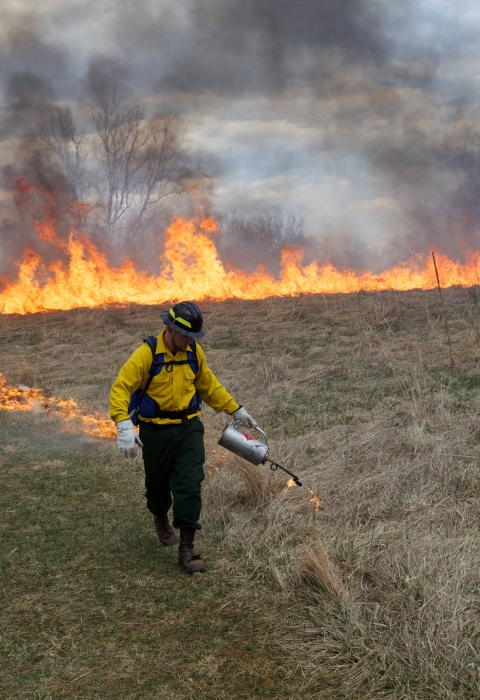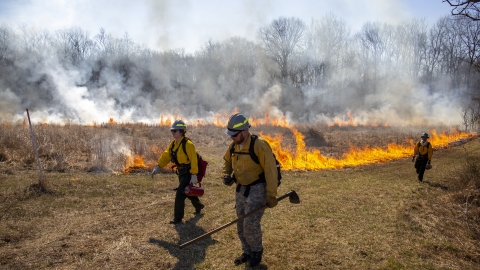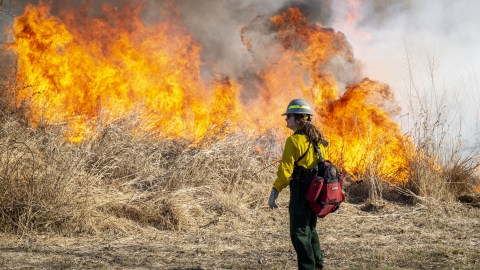The U.S. Fish and Wildlife Service plans to conduct a prescribed burn prescribed burn
A prescribed burn is the controlled use of fire to restore wildlife habitat, reduce wildfire risk, or achieve other habitat management goals. We have been using prescribed burn techniques to improve species habitat since the 1930s.
Learn more about prescribed burn at the National Conservation Training Center (NCTC) in March or early April to improve wildlife habitat. The NCTC is located at 698 Conservation Way, off Shepherd Grade Road, north of Shepherdstown. The area to be treated includes two fields approximately 30 acres in total size.Experienced firefighters from the U.S. Fish and Wildlife Service, the National Park Service and other agencies will be carrying out the operation. The use of fire in prescribed burns removes invading trees and shrubs that would otherwise overtake the fields, helps control non-native plants, and promotes the growth of native warm-season prairie grasses that provide important wildlife habitat. The operation will only take place under favorable weather conditions to keep the fire and smoke manageable. Since such prescribed fire is weather-dependent, the exact date for this activity will not be known until shortly beforehand.
People may see smoke in the area for a brief time, according to Casey Johnson, Ecologist, NCTC Land Management.“Grass fires such as this usually burn quickly and then go out,” Johnson said. “Fire breaks have been created to ensure the fire is contained and wildland firefighting equipment will be on hand. All needed permits have been obtained.”
Fire is the most effective way to maintain and promote native prairie grasses such as switchgrass, little bluestem, Indiangrass, and big bluestem. These grasses, once common in the Eastern Panhandle, thrive on fire, according to Johnson. They provide an ideal habitat for nesting birds, which can go under and between the clumps of grass to find food and seek protection from predators and the elements.
"The upcoming prescribed burn will be NCTC’s eleventh since the beginning of this successful program in 2011”, said Steve Chase, NCTC Director. “Since we have started prescribed burning, our habitat for wildlife has improved tremendously, especially for small mammals, ground-nesting birds, and pollinating insects.”
The National Conservation Training Center is the home of the U.S. Fish and Wildlife Service and a leader in environmental sustainability. The center provides exemplary training tailored to support Service employees and conservation partners in the accomplishment of the agency’s mission. For more information about NCTC.
The mission of the U.S. Fish and Wildlife Service is to work with others to conserve, protect and enhance fish, wildlife, plants, and their habitats for the continuing benefit of the American people. Learn more information on our work and the people who make it happen.
Contact: Casey Johnson, USFWS; Office: 304-876-7347





